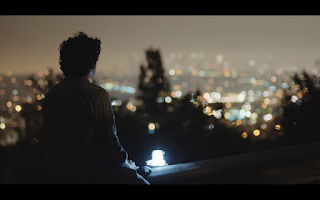I realized that I got deep into the shooting experience in my first post and didn't really address the main "Holy $h!t" factor of this camera. Dual Native ISO (800 & 5000) is amazingly innovative.
 |
| Click here to watch the video. |
My human eyes are in their late 30's, but they're still pretty damn good. The Sony A7s (which I love) can also see in the dark, but that image is 8-bit, 422 color (when going into an Odyssey 7Q or Shogun). That is difficult to rationalize on higher end shoots. There simply isn't enough information to make that camera a true workhorse for commercial & TV work and it is a scary prospect for indie features. You simply cannot push the footage very far. You can just nudge it. It falls apart relatively quickly on initial color passes, let alone secondary coloring.
The Varicam camera is significant because it combines amazing low light with delicious, beefy codecs. The Varicam LT records 4K at 10-bit 422 and 1080 in 444 (either AVC-Intra codec or ProRes). Soon it will even be capable of RAW output. This means it can be used confidently on virtually any shoot.
 I'm getting nerdy again. What I want to make clear is that this is a significant step forward. Ever since Sony started pushing us into insane ISO's, I've gotten addicted to what low light can provide for me during production.
I'm getting nerdy again. What I want to make clear is that this is a significant step forward. Ever since Sony started pushing us into insane ISO's, I've gotten addicted to what low light can provide for me during production. More and more, I do my best to light a space 360 degrees. I want the actors to feel free and I want to be able to stay spontaneously creative on set with my directors. If we have a ton of lights set up, it's simply not possible to make major changes to a scene quickly. With this kind of light sensitivity, we can light purely for aesthetics and not for exposure. We can incorporate lighting into our production design more and more. We can be less obtrusive and move more quickly and this is a big deal for all productions (especially indie productions, which is where my heart lives).
I love blowing peoples' minds wth my A7s and using it where I can. Producers and actors often can't fathom some of the images I've been able to capture, which delights me to no end. If I can start doing this same thing, but on larger, more demanding shoots, well I just might become some kind of hero.
No comments:
Post a Comment